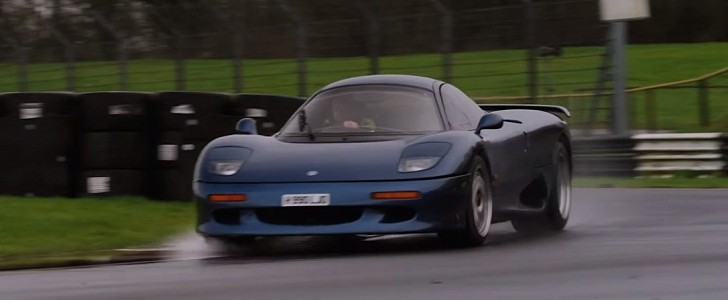If you want to make a car reviewer nervous, all you need to do is have a limited-production supercar with a reputation for poor handling, a rainy day, and a test drive proposal that nobody can resist. All you need to replicate this is to get one of these GBP 1.4 million (ca. $1.78 million) Jaguar Sport XJR-15s and then select your reviewer of choice to lend the vehicle to them.
We are just kidding, kind of, as anyone would be a bit nervous when invited to drive a $1.7 million vehicle that has a reputation for prickly handling and having a wet track at their disposal.
Well, with the latter, things are just a bit better than attempting to drive something like this on the open road. While tires have evolved in the last 30 years, but the abilities of the average driver have not, so it would be like gambling but letting someone else pick your cards or place your wage.
If you happen to be fortunate enough to drive something like this Jaguar XJR-15 on a track, even a wet one, at least you know that you do not risk getting rear-ended by an SUV with someone texting behind the wheel. Being sorry does not cut it when things like these happen, does it? No, it does not, in case there was any doubt on the matter.
As Henry Catchpole explains, this vehicle is the first all-carbon-fiber production road-going supercar. Yes, it beat the McLaren F1 to that title, but it was only made in 53 examples, out of which the first 17 were made for the racing in the one-make series that was released after the model's inception. It was also launched just before the XJ220, but built by Jaguar Sport, which was a racing division that was not as tied to the British brand as you might have thought.
The XJR-15 was developed on the base of the XJR-9 racing car that won at Le Mans in 1988, and it was designed by Peter Stevens, who has penned a few special vehicles over the years. So, we are writing about a road-going race car that was based on another racing car.
For example, you might remember his work on the McLaren F1, as well as on the 1993 Subaru's Impreza WRC car, made famous by its “555” livery. Some of Stevens' later projects include several MG and Rover models, including the 75, 75 Tourer, 45, Streetwise, and 25, not to mention a couple of Subarus before them.
The race car turned road car still has many signs of its pedigree, which include gauges, a partially exposed rollcage, fixed bucket seats with adjustable pedals, and many other controls that are meant to be used with racing gloves while driving at high speed on a track, not while sitting in a traffic jam somewhere.
The example in question, with chassis #21, was for sale five years ago, and it will be for sale again, but at a higher price this time. It will be interesting to see where the auction heads with this example, as supply is limited, and there is no reason why any of them will ever become cheaper.
Well, with the latter, things are just a bit better than attempting to drive something like this on the open road. While tires have evolved in the last 30 years, but the abilities of the average driver have not, so it would be like gambling but letting someone else pick your cards or place your wage.
If you happen to be fortunate enough to drive something like this Jaguar XJR-15 on a track, even a wet one, at least you know that you do not risk getting rear-ended by an SUV with someone texting behind the wheel. Being sorry does not cut it when things like these happen, does it? No, it does not, in case there was any doubt on the matter.
As Henry Catchpole explains, this vehicle is the first all-carbon-fiber production road-going supercar. Yes, it beat the McLaren F1 to that title, but it was only made in 53 examples, out of which the first 17 were made for the racing in the one-make series that was released after the model's inception. It was also launched just before the XJ220, but built by Jaguar Sport, which was a racing division that was not as tied to the British brand as you might have thought.
The XJR-15 was developed on the base of the XJR-9 racing car that won at Le Mans in 1988, and it was designed by Peter Stevens, who has penned a few special vehicles over the years. So, we are writing about a road-going race car that was based on another racing car.
For example, you might remember his work on the McLaren F1, as well as on the 1993 Subaru's Impreza WRC car, made famous by its “555” livery. Some of Stevens' later projects include several MG and Rover models, including the 75, 75 Tourer, 45, Streetwise, and 25, not to mention a couple of Subarus before them.
The race car turned road car still has many signs of its pedigree, which include gauges, a partially exposed rollcage, fixed bucket seats with adjustable pedals, and many other controls that are meant to be used with racing gloves while driving at high speed on a track, not while sitting in a traffic jam somewhere.
The example in question, with chassis #21, was for sale five years ago, and it will be for sale again, but at a higher price this time. It will be interesting to see where the auction heads with this example, as supply is limited, and there is no reason why any of them will ever become cheaper.














